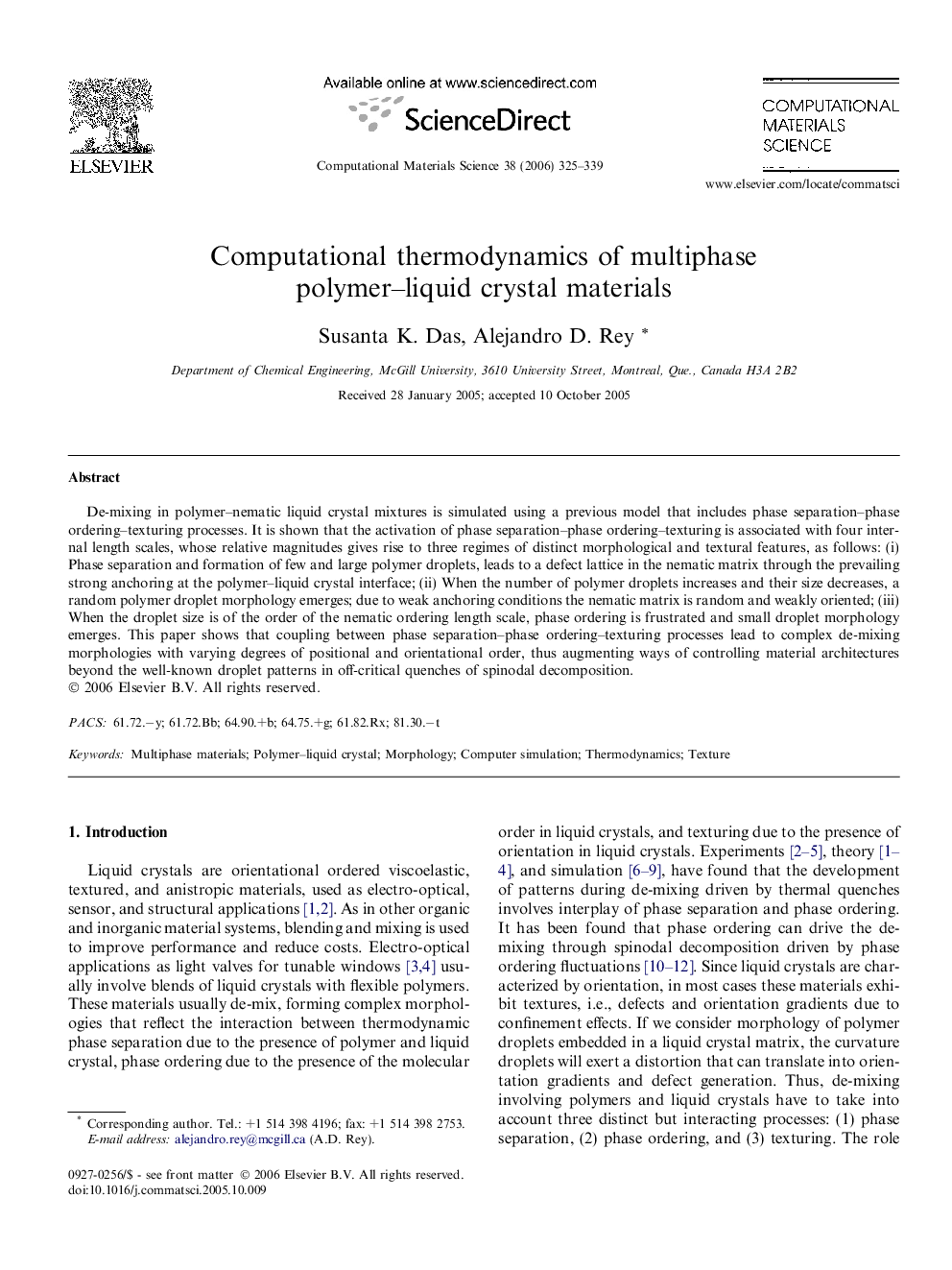| Article ID | Journal | Published Year | Pages | File Type |
|---|---|---|---|---|
| 1563993 | Computational Materials Science | 2006 | 15 Pages |
Abstract
De-mixing in polymer-nematic liquid crystal mixtures is simulated using a previous model that includes phase separation-phase ordering-texturing processes. It is shown that the activation of phase separation-phase ordering-texturing is associated with four internal length scales, whose relative magnitudes gives rise to three regimes of distinct morphological and textural features, as follows: (i) Phase separation and formation of few and large polymer droplets, leads to a defect lattice in the nematic matrix through the prevailing strong anchoring at the polymer-liquid crystal interface; (ii) When the number of polymer droplets increases and their size decreases, a random polymer droplet morphology emerges; due to weak anchoring conditions the nematic matrix is random and weakly oriented; (iii) When the droplet size is of the order of the nematic ordering length scale, phase ordering is frustrated and small droplet morphology emerges. This paper shows that coupling between phase separation-phase ordering-texturing processes lead to complex de-mixing morphologies with varying degrees of positional and orientational order, thus augmenting ways of controlling material architectures beyond the well-known droplet patterns in off-critical quenches of spinodal decomposition.
Keywords
Related Topics
Physical Sciences and Engineering
Engineering
Computational Mechanics
Authors
Susanta K. Das, Alejandro D. Rey,
